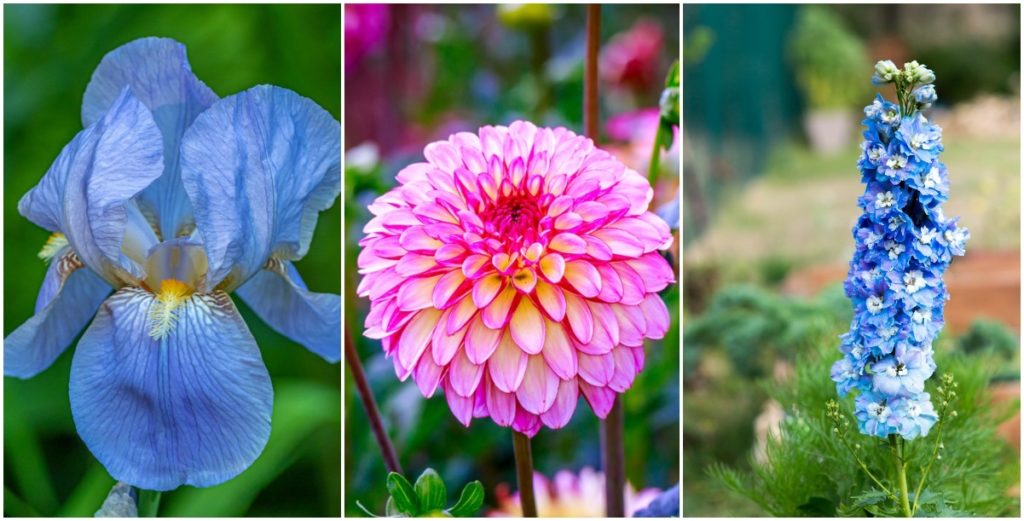
Some plants are easy. All they need is a bit of sunshine, a sprinkling of compost, and the occasional watering to put out a captivating display of flowers and foliage.
Easygoing and forgiving perennials like columbine (Aquilegia canadensis), purple coneflower (Echinacea purpurea), bleeding heart (dicentra eximia), and stonecrop (Sedum spp.) are among the most effortless plants to grow.
When you want a stress-free garden, native plants are some of the easiest to care for. Better yet, rewild your garden for a low effort – yet beautiful and ecologically valuable – outdoor space.
High maintenance cultivars, on the other hand, are not nearly so relaxed.
Fussy, demanding, and incredibly sensitive, these plants need the perfect temperature, the correct amount of sunlight hours at the right time of day, a precise fertilization schedule, and moist (but not too moist) soil.
And that’s not taking into account the pruning, deadheading, and dividing that’s often necessary to keep them looking good from spring until fall.
But if you prefer to garden on hard mode, these mercurial plants will surely test your mettle. If you’re successful in anticipating their every need, you will be supremely rewarded with the most exquisite and fragrant blooms.
1. Gardenia (Gardenia jasminoides)

The elusive and temperamental gardenia often represents the pinnacle of horticultural prowess.
A beauty to behold, gardenias are evergreen shrubs that bloom profusely with whorls of cream colored flowers throughout the year in warm climates.
Though the flowers are quite lovely, gardenias are most prized for the intense and intoxicating fragrance they produce, a little slice of pure heaven.
Gardenia hails from the tropical and subtropical regions of Africa, Asia, and the Pacific Islands. In its homeland, it is an adaptable plant that is fairly easy to grow. Outside of its native range, however, and gardenia becomes the ultimate garden diva.
Neglecting just one or two of gardenia’s needs stresses the plant greatly, resulting in yellowing leaves, die back, and flower bud drop.
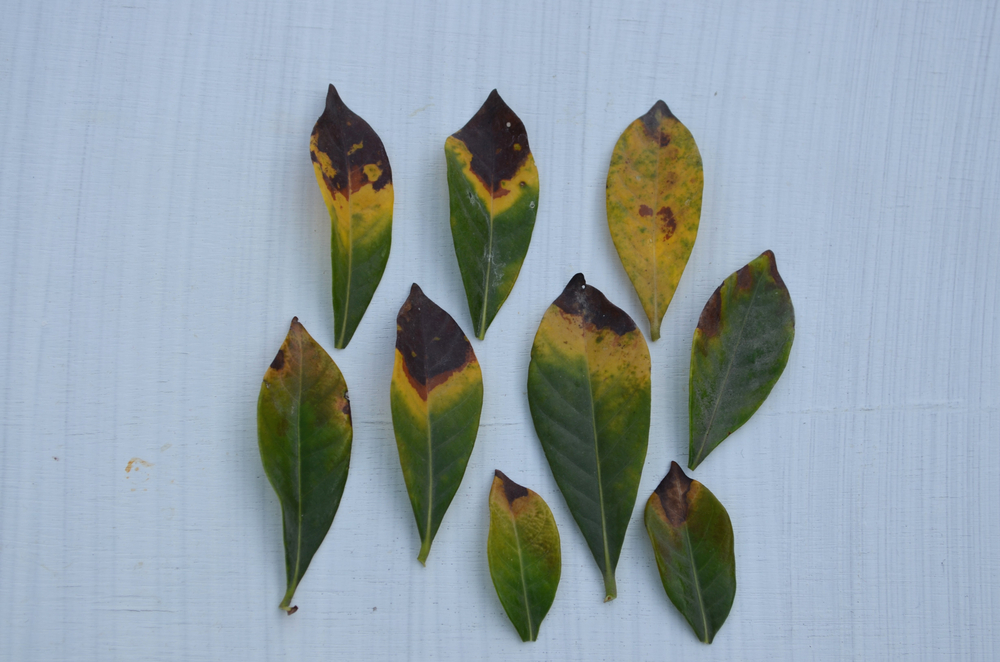
Hardiness zone
Gardenia is hardy in zones 8 to 11. In cooler regions, gardenia can be grown in containers and overwintered indoors.
Sun exposure
Full sun to part shade.
In hot climates, plant gardenia in a spot that receives morning sun with afternoon shade to prevent leaf scorch and flower drop. In cold climates, gardenia can tolerate full sun provided plants are deeply mulched.
Temperature
Gardenias thrive in moderate warmth between 65°F and 70°F (18°C and 21°C). These plants won’t form flowers when exposed to temperatures below 60°F (15°C).
Watering
Keep gardenia’s soil consistently moist at all times. Overwatering or allowing the soil to dry out will cause flower buds to drop.
Irrigate gardenias from below, taking care to keep the water off the foliage and flowers to prevent spotting. Water with room temperature water whenever possible and flush with distilled water once per month.
Fertilizer
Plant gardenias in soil enriched with plenty of organic matter with an acidic pH of 5 to 6.
Gardenias need to be fertilized every 2 to 4 weeks from March to October. Use a fertilizer for acid lovers with iron, such as blood meal or fish emulsion.
Problems
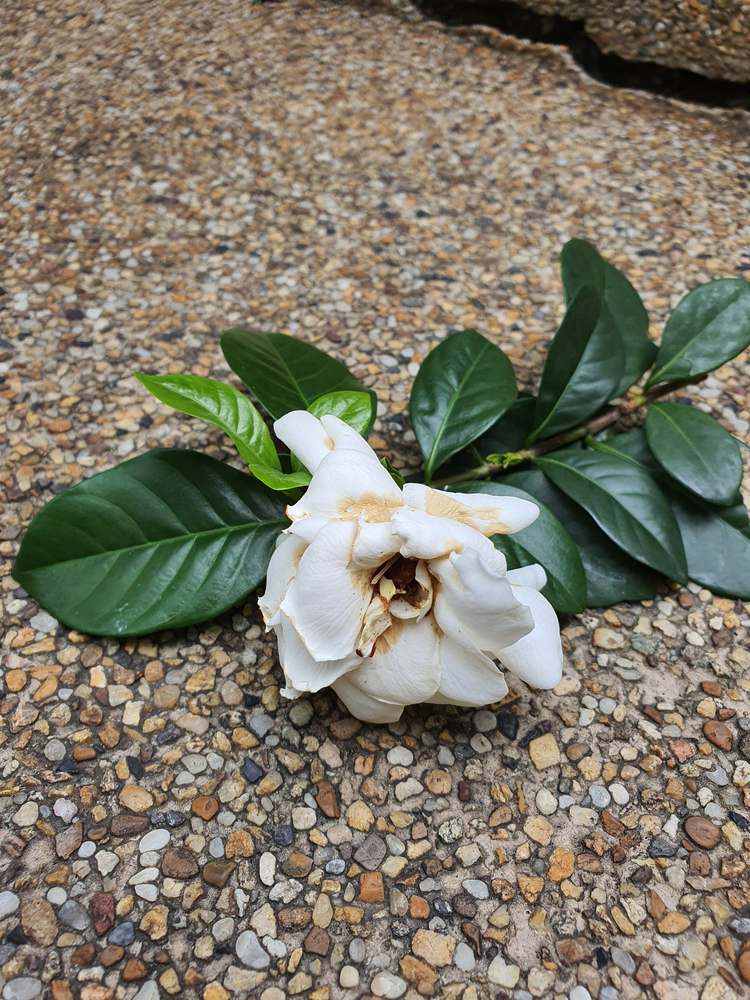
Root rots, powdery mildew, stem canker, and sooty mold are some of the diseases common to gardenia shrubs. Nematodes, aphids, spider mites, whiteflies, and mealybugs can inflict a lot of damage as well. Iron deficiencies, hard water, and alkaline soils will cause the normally deep green leaves to turn yellow.
2. Dahlia (Dahlia spp.)

The Dahlia group contains an enormous amount of diversity.
With 42 species in the genus, there are currently 57,000 recognized dahlia cultivars and hybrids. These are further divided into 14 flower types – single flower, anemone, water lily, decorative, ball, pompon, cactus, and so on.
Available in every color except blue, the showy flowers range from 2-inches across to massive 12-inch saucers. Dahlias are typically in bloom from mid-summer to fall. Most types are scentless but are very attractive to pollinators thanks to the flower’s vibrant color palette.
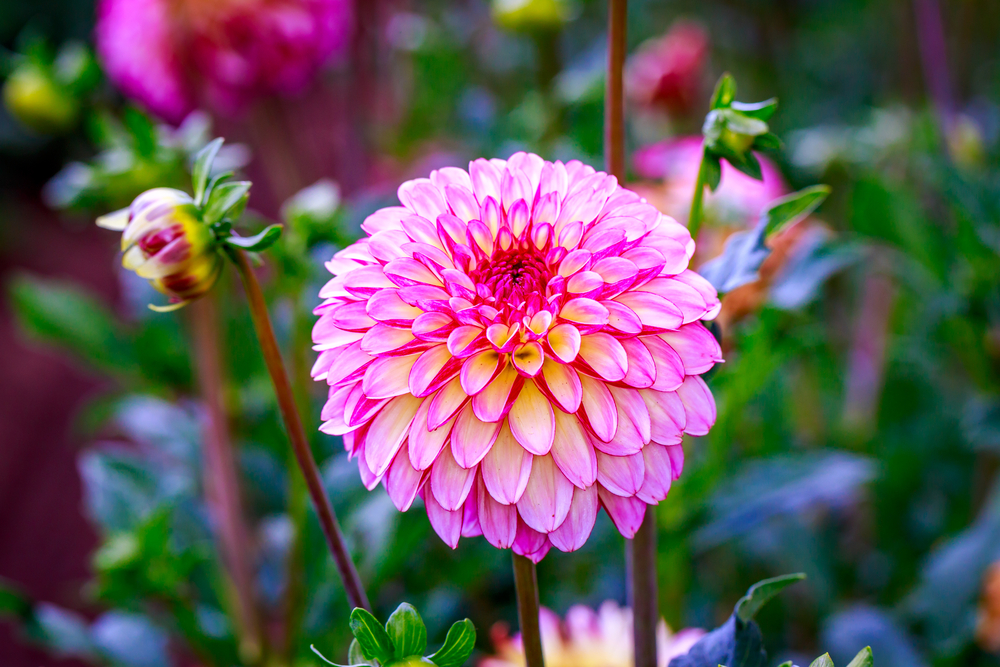
Dahlias are native to Mexico and Central America and need lots of warmth and sunlight to flourish. To ensure dahlias look their best, they will need extra TLC.
Hardiness zone
Dahlias are hardy in zones 7 through 10. Dahlias may be grown in cooler climes by digging up their tuberous roots after the first frost in autumn and replanting the following spring.
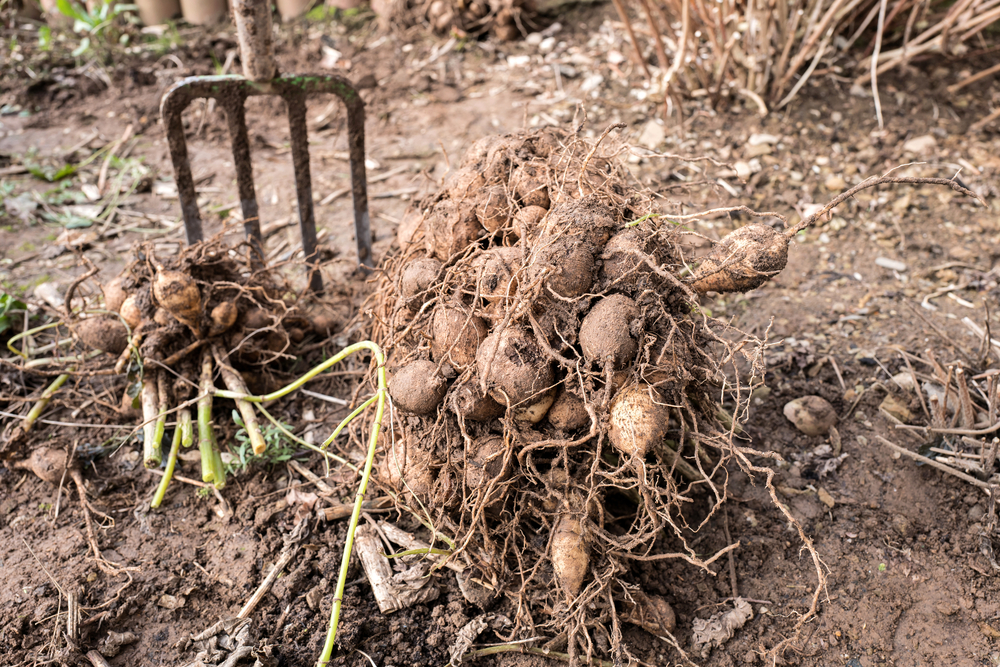
Even in warm climates, serious dahlia gardeners will still lift and store the roots in fall to protect them from tuber rot caused by heavy rains. Overwintering dahlia tubers indoors also has the advantage of superior blooming for the next growing season.
Planting
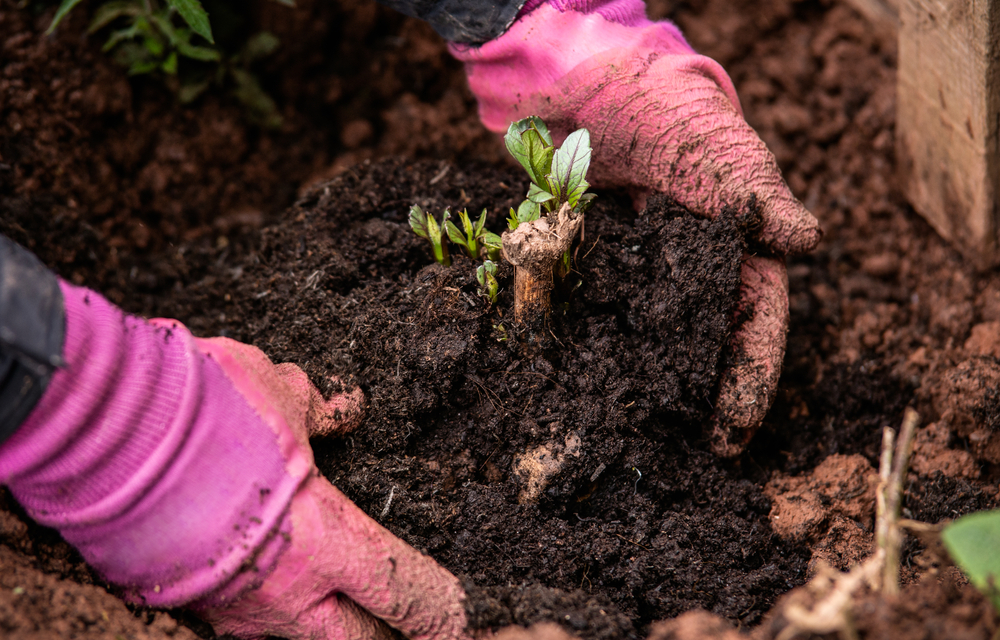
The tallest varieties of dahlia are best planted by digging holes 8 to 12 inches deep for each plant. Set the tuber within, sprouts facing upward, and cover with 3 inches of soil.
As the shoots poke up through the earth, gradually add the remaining soil, taking care to never cover up the shoots.
Watering
When dahlias are up and growing, keep the soil consistently moist and do not let it dry out.
When planting tubers in spring, water the site only once and do not water again until shoots have emerged above the soil. Freshly planted, unsprouted tubers are most at risk for rotting when they receive too much moisture.
Fertilizer
To keep dahlias blooming through summer, feed monthly with a low nitrogen fertilizer such as 5-10-10. Fertilizing dahlias with too much nitrogen will cause the plants to put out lots of lush green growth but little to no blooms.
Staking
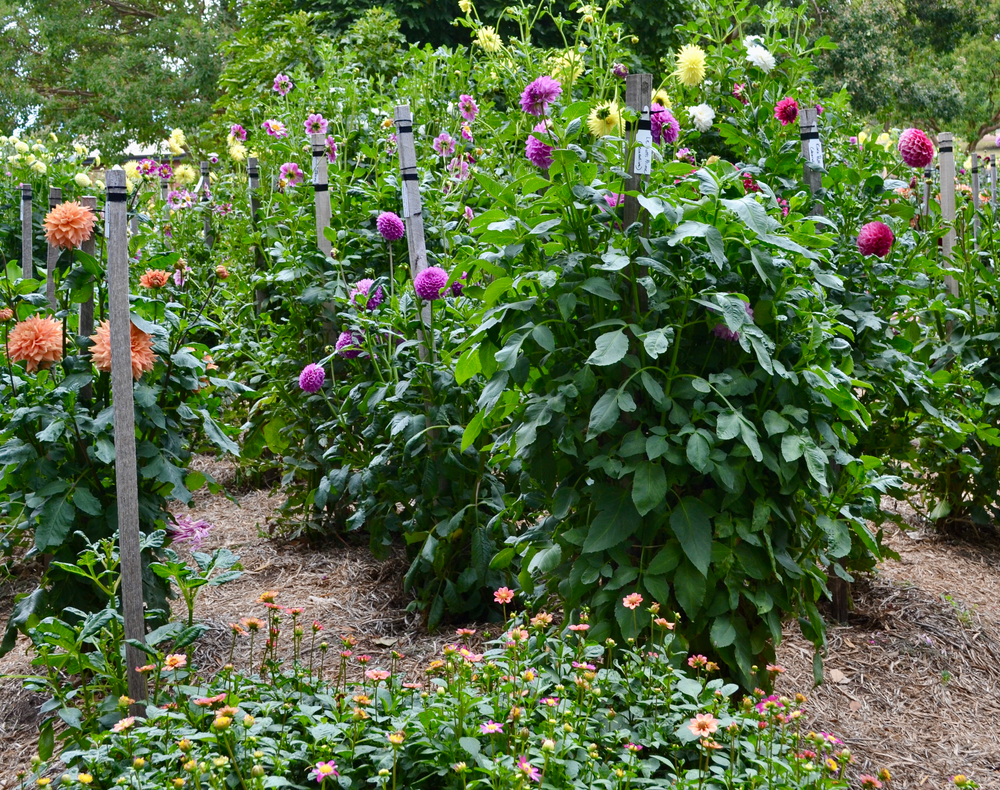
Tall varieties with large flower heads will need to be staked and supported. Dahlias are prone to breakage and every branch that snaps means you’ll lose out on all the flowers it would have produced for the season.
Start by driving a stake 2 inches away from the tuber at planting time. When the plant is 2 feet tall, tie the main stalk to the stake with soft materials like cloth or nylon. As the side branches develop, keep them supported by encircling the entire plant loosely with twine.
Pinching, disbudding, and deadheading
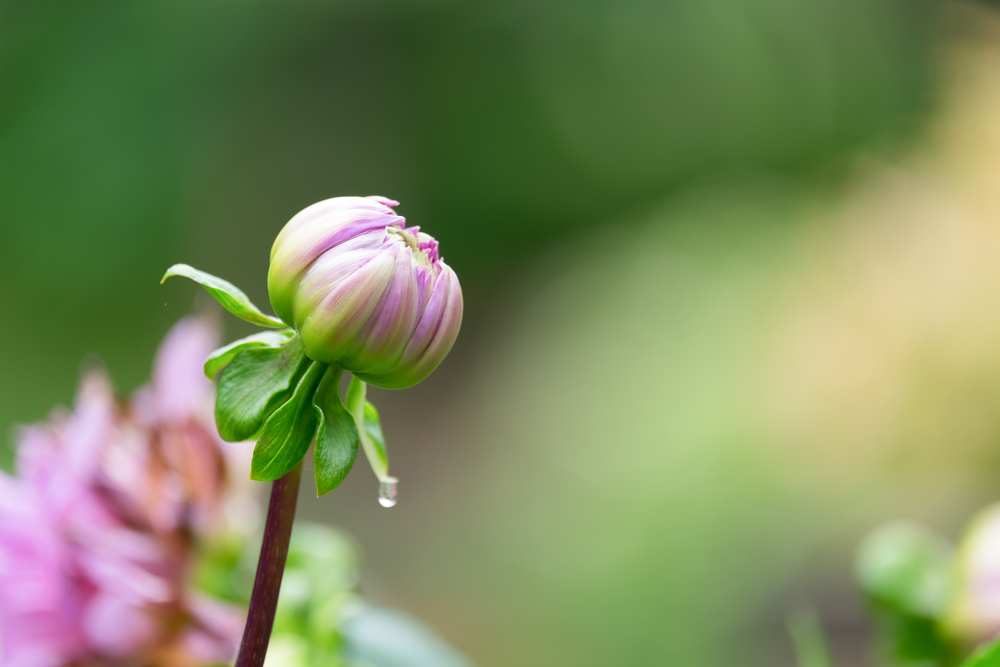
When dahlias are 12 inches tall, pinch back the main stem to 4 inches to promote bushier plants.
Disbudding – removing all but one of the flower buds in each cluster – will produce the largest and most magnificent flowers, although there will be fewer of them.
Deadhead faded flowers to encourage blooming for more than 3 months.
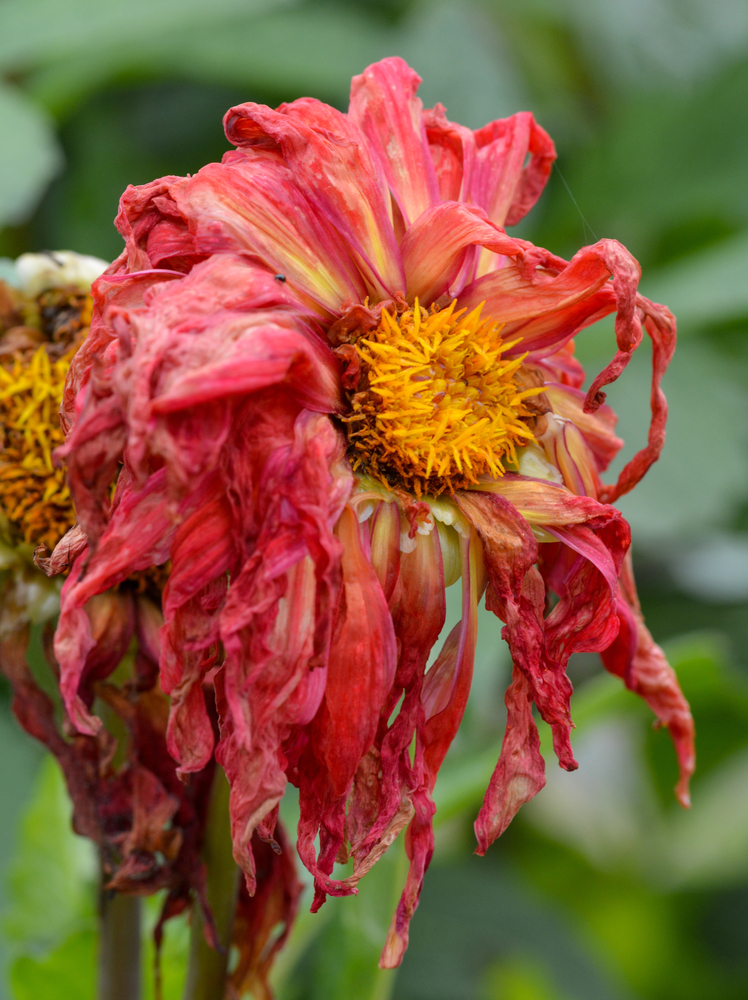
Problems
Tuber rot and powdery mildew are the most common dahlia problem gardeners face. Otherwise, keep an eye out for aphids, spider mites, caterpillars, leaf hoppers, snails and slugs, earwigs, deer, and gophers.
3. Bearded Iris (Iris germanica)
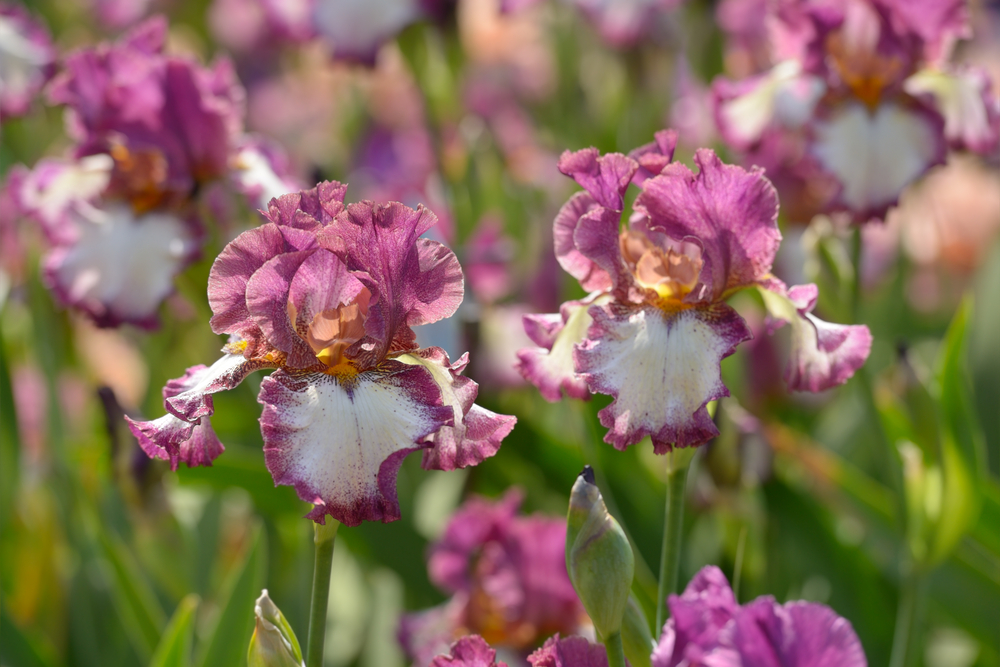
Iris is one of the oldest perennials in the garden, being cultivated by humans for no less than 4,000 years.
The plant itself has evolved and diversified over many millennia, and there are thousands of irises to choose from, available in numerous forms, sizes, and colors except fiery red.
Bearded iris is the quintessential iris, featuring six petals – three upright “standards”, three drooping “falls”, with a fuzzy patch of soft bristles (the “beard”) on the main lower petal that steers insects towards its pollen. Most cultivars have a sweet aroma.
Although bearded iris is fairly easy to grow when properly sited, keeping these flowers looking great year after year does take a serious commitment.
Hardiness zone
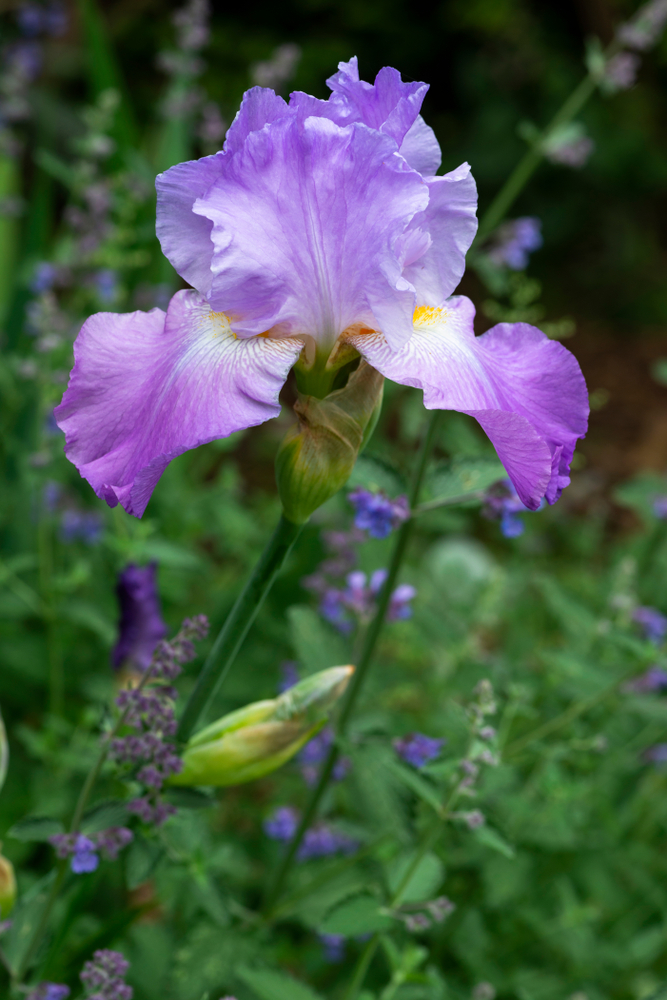
3 to 10.
Sunlight exposure
Full sun.
Bearded iris will tolerate some light shade but flowers will be fewer and less spectacular. Less sunlight also lowers their resistance to disease.
Soil
Bearded iris thrives in well drained, humusy, evenly moist soil.
The rhizomes of bearded iris are susceptible to rot in poorly drained locations. Heavy clay soils should be amended with coarse sand to improve drainage.
Never mulch around your irises since this can also cause rhizome rot.
Planting and dividing
Iris rhizomes are planted in late summer, ½ inch deep, spaced 12 to 24 inches apart.
As bearded irises grow, they produce masses of rhizomes that will become overcrowded over time. Every 2 to 3 years, bearded irises need to be dug up, divided, and replanted or else they will stop blooming altogether.
Deadheading and pruning
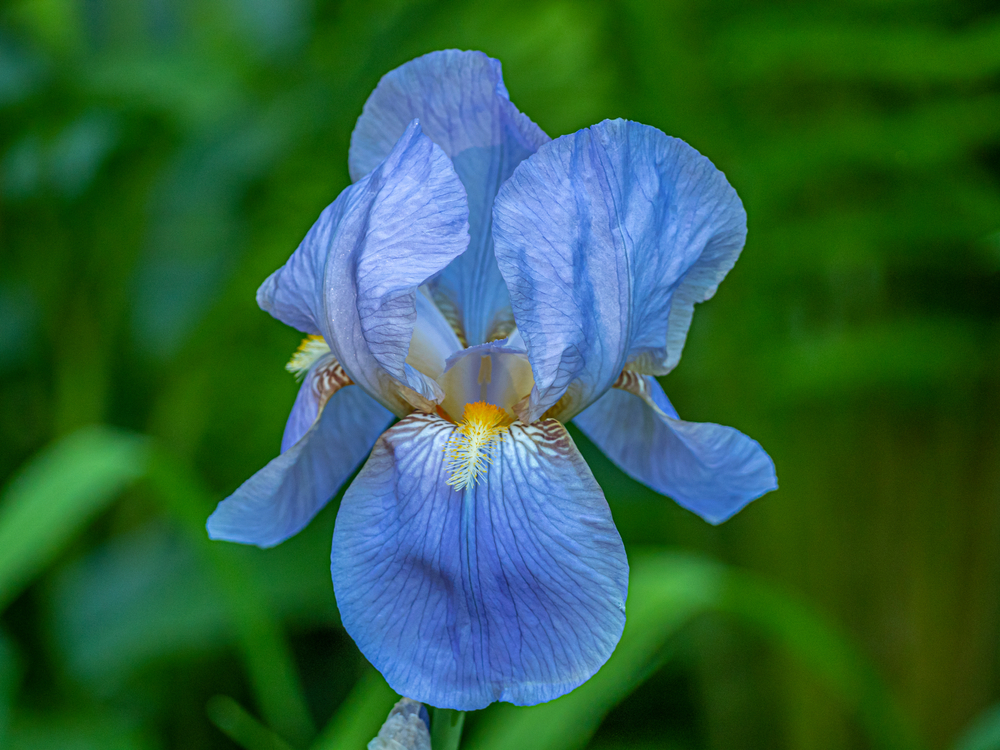
Once the flowers have finished blooming, remove spent blooms and cut the flowering stem to the ground.
The rigid, sword-like foliage can sometimes look scraggly as the heat of summer wears on. Promptly remove all browning and spotted leaves as they appear.
Prune back all foliage to about 6 inches in autumn to keep the plant looking tidy and to avoid harboring pests and disease over winter.
Problems
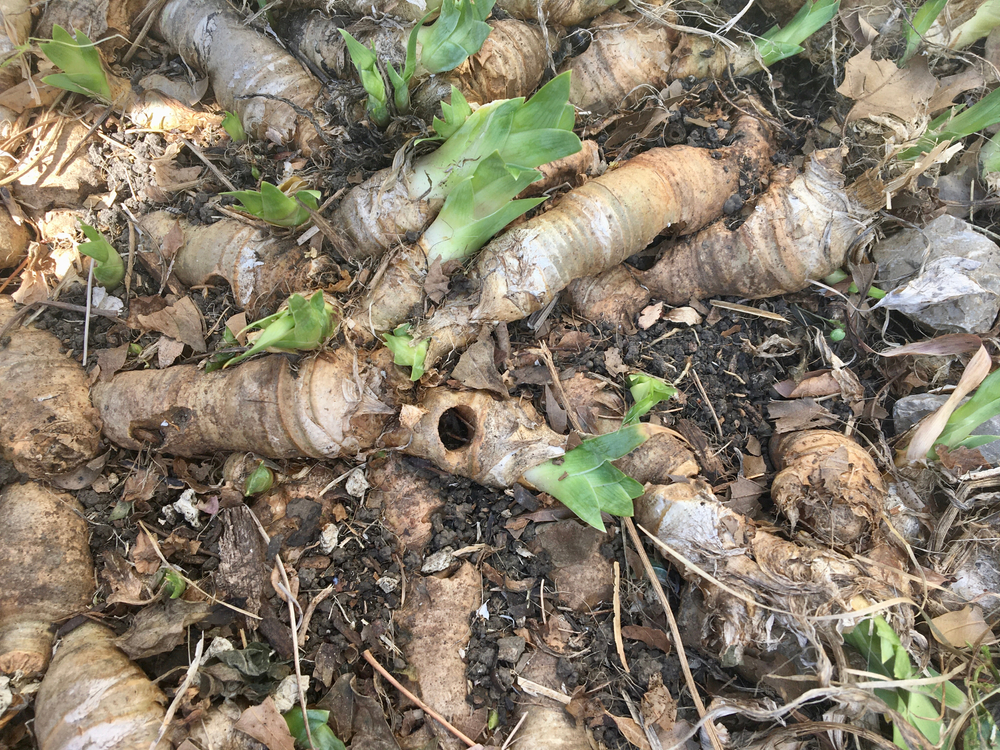
The most destructive pest of bearded iris is the iris borer.
Mottled leaves and flowers are typically caused by fungal leaf spot or crown rot fungus. Using clean and sanitized shears, remove all diseased parts as soon as possible to mitigate spread.
4. Delphinium (Delphinium x elatum)
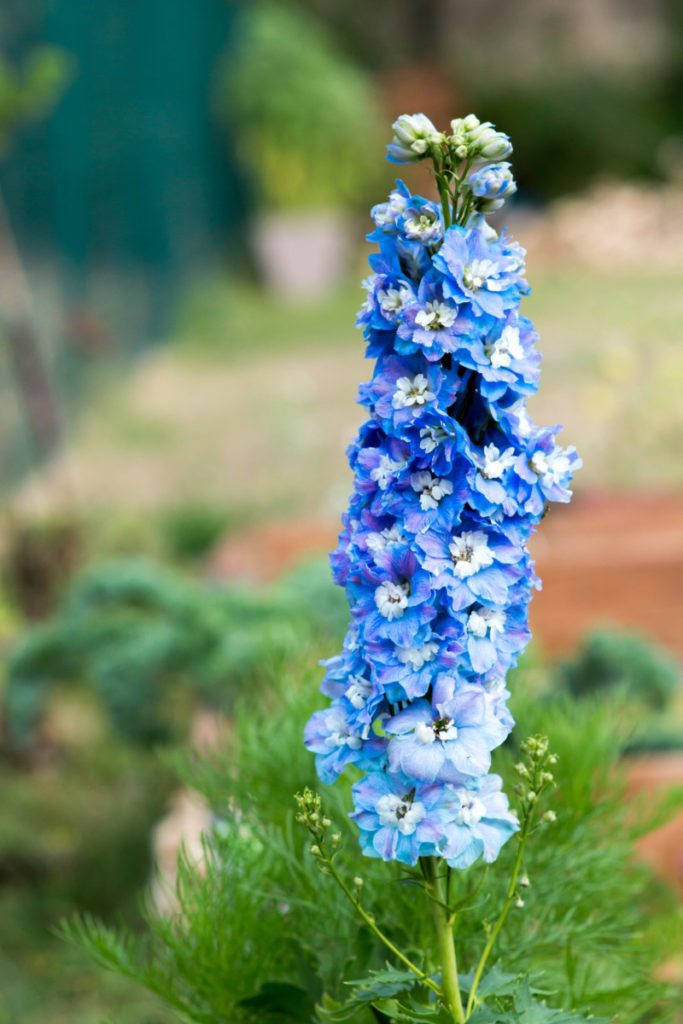
Sky high and stunning, delphinium hybrids from the Elatum group create a showy focal point in the garden.
As the tallest of the delphiniums, these perennials can grow as high as 8 feet when happy.
From June to July, delphinium blooms with spikes of tightly packed, 1-inch florets in blue, violet, pink, or white. Each flowering raceme can hold up to 100 florets, making delphinium a generous host for butterflies, hummingbirds, and bees.
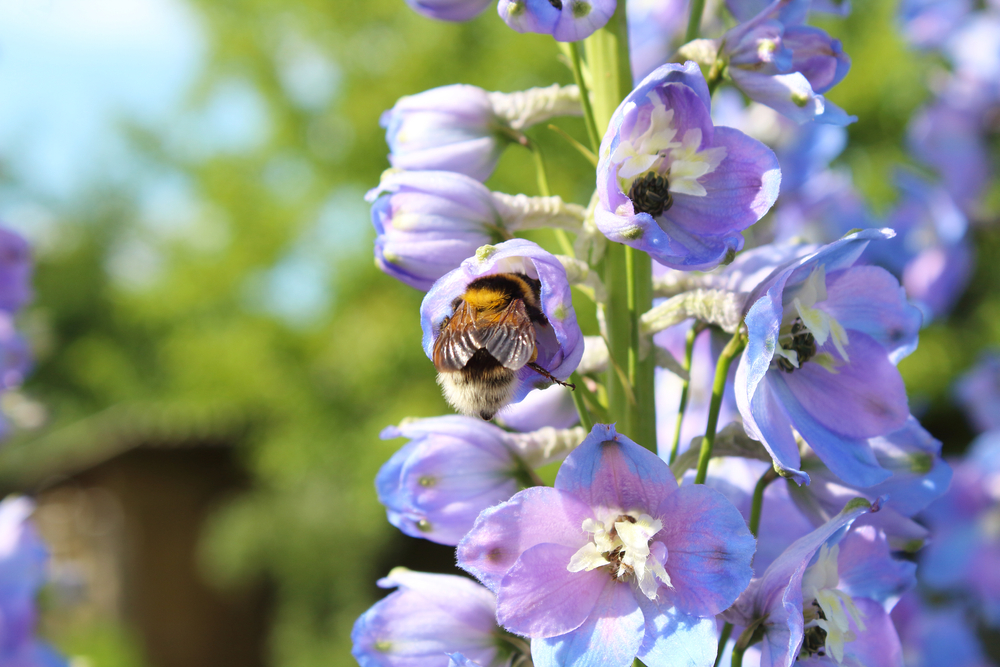
Dwarf varieties of delphinium are much easier to maintain since they won’t need the same level of pruning, deadheading, and staking. But if you want these beautiful giants to grace your landscape, they will need considerable care to flourish and look their best.
Hardiness zone
3 to 7.
Sunlight exposure
Full sun.
Delphiniums prefer a cool and moist climate and tend to weaken under hot and dry conditions. In sweltering southern regions, plant them in a spot with afternoon shade.
Delphiniums need a minimum of six hours of sun to flower, but the more sunlight you give them, the better they are able to resist disease.
Soil
Plant delphiniums in organically rich, moist, well-draining soil. Amend clay heavy soils with plenty of compost to boost drainage and avoid crown rot.
Staking
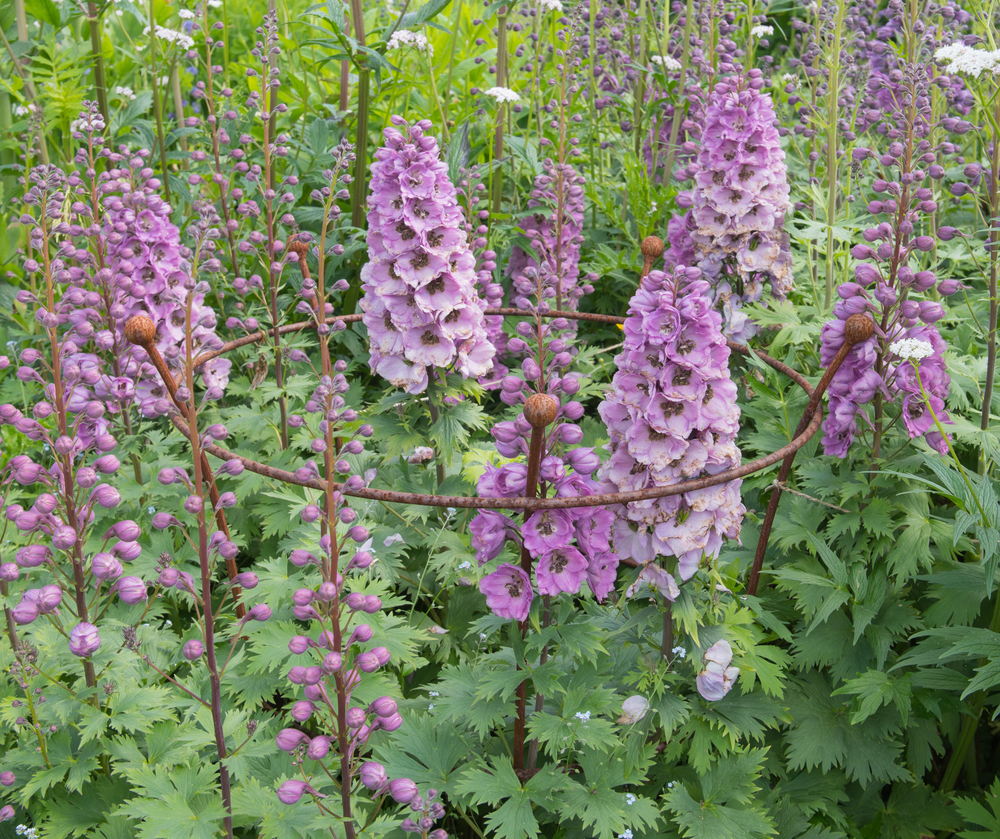
Too heavy to bear the weight of their flowering spikes, tall delphiniums require sturdy stakes to keep them toppling over.
Ideally, delphiniums should be planted in a spot sheltered from wind and heavy rains. Add stakes when plants are 12 inches tall.
Thinning and deadheading
For the best looking spikes, thin flowering shoots when they reach 3-inches high. Leave 2 to 3 shoots on new plantings and 5 to 7 on mature plants.
To get a second bloom in late summer, deadhead spent spikes by cutting the flower stalk all the way down to the basal foliage.
Problems
Delphiniums are most susceptible to powdery mildew, leaf spots, crown rot, and botrytis blight when planted too deeply, not given enough sunlight, or are situated in wet, poorly drained soil.
Slugs and snails love delphiniums too, as do aphids, leaf miners, stem borers, and spider mites.
5. Hybrid Tea Rose (Rosa x hybrida)
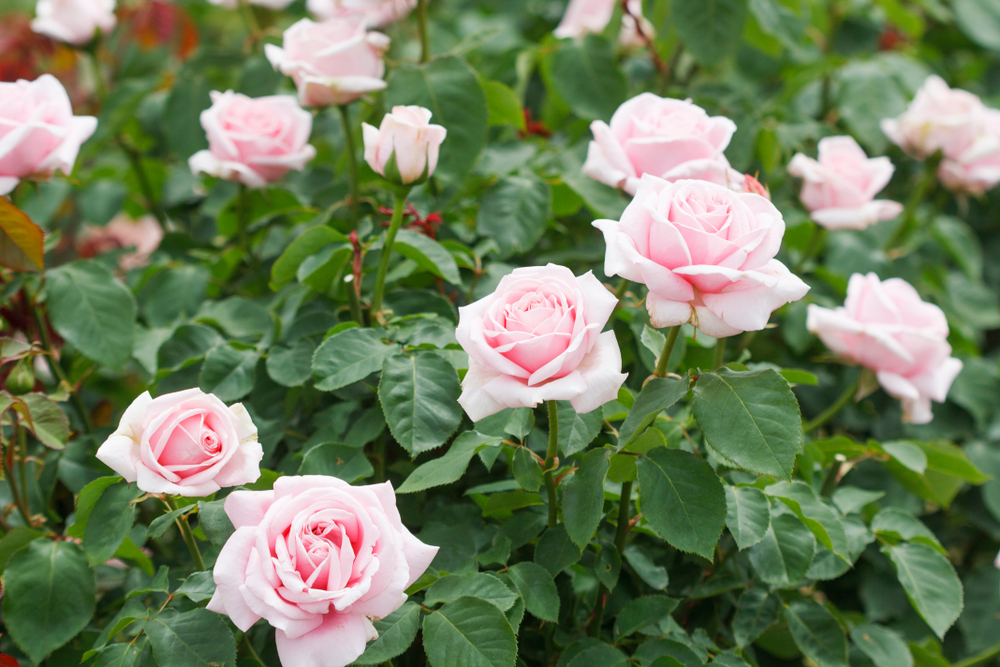
Hybrid tea roses are arguably the world’s favorite rose.
The classic florist rose, hybrid teas produce large, high centered, fragrant flowers with lightly ruffled petals borne on long, thorny stems.
While roses in general have earned a reputation for being fussy, disease-prone, and high maintenance, not all types of roses are so demanding. Try growing hardier knock out roses, carefree roses, and climbing roses to enjoy the awe-inspiring blooms without the stress.
Sadly, hybrid tea roses are not one of the easy ones. To glimpse these iconic beauties, you will need to be on point when it comes to pruning, fertilizing, and controlling disease.
Hardiness zone
5 to 9.
Sunlight exposure
Full sun.
Soil
Hybrid tea roses grow best in loamy, well-draining soil with a slightly acidic pH. Apply mulch around rose bushes to keep the roots cool.
Watering
Irrigate your roses deeply and often, preferably in the morning. Always water the soil and avoid wetting the foliage to prevent disease.
Fertilizer
Roses are heavy feeders. Enrich the soil with compost in spring and throughout the season to boost fertility.
Apply Epsom salts in May and June to spur vegetative growth.
Banana peels are an excellent source of phosphorus which will help keep hybrid teas ever blooming.
Pruning
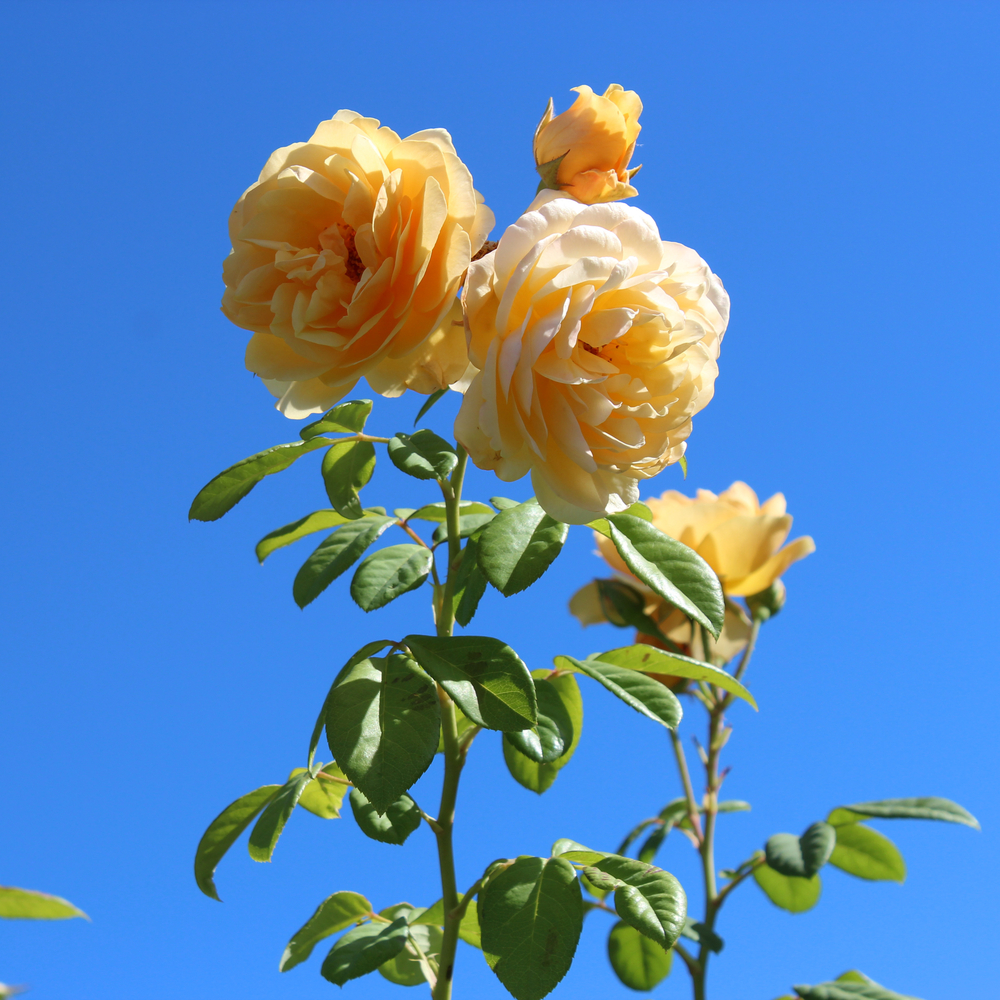
Good air circulation is key for keeping hybrid teas productive and disease-free.
Throughout the growing season, remove crisscrossing branches, suckers, blackened or dead wood, and diseased leaves.
During dormancy in late winter, do a hard pruning. Hybrid teas should be cut back to 12 to 18 inches from the ground to encourage vigorous growth come spring.
Deadheading
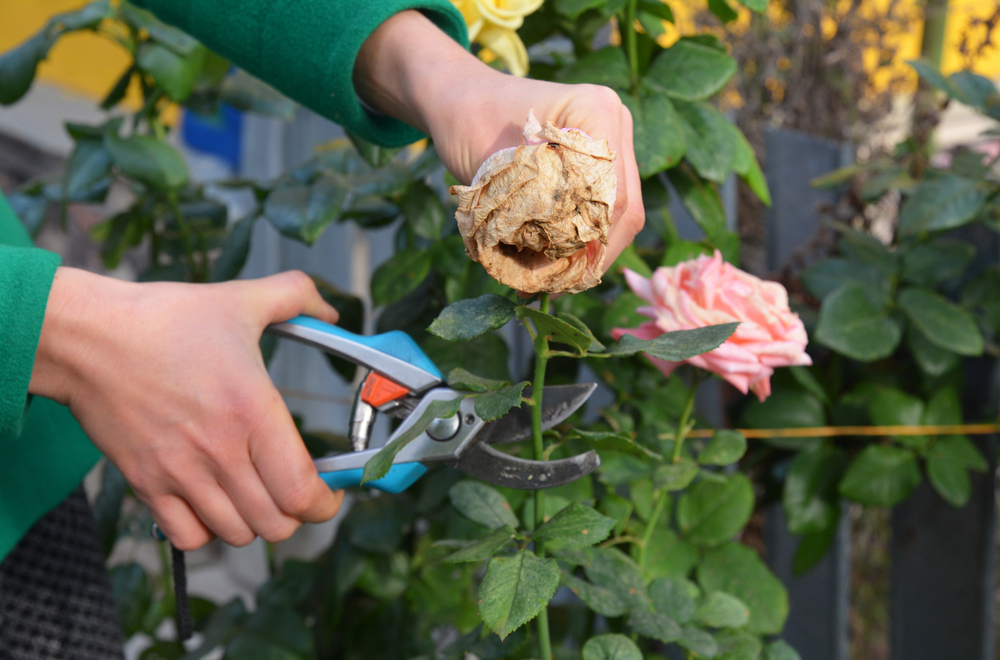
In flower from May to the first frost, deadheading faded hybrid tea roses will promote rebloom.
Problems
Roses are affected by a wide range of pests and disease. These include black spot, powdery mildew, rose rosette, rust, aphids, spider mites, leaf hopper, Japanese beetles, thrips, and deer.
While these plants may present some challenges, the rewards are certainly worth it.

Get the famous Rural Sprout newsletter delivered to your inbox.
Join the 50,000+ gardeners who get timely gardening tutorials, tips and tasks delivered direct to their inbox.

